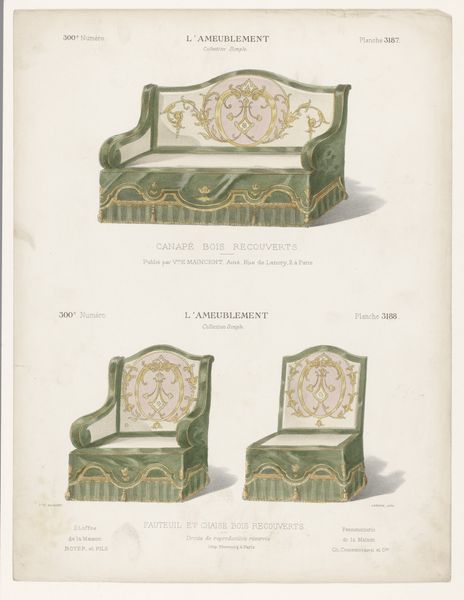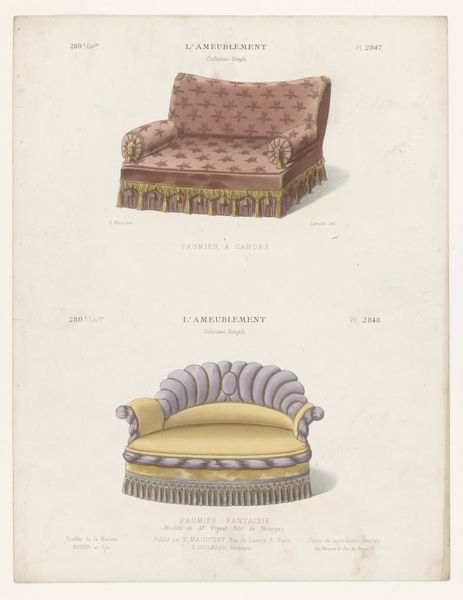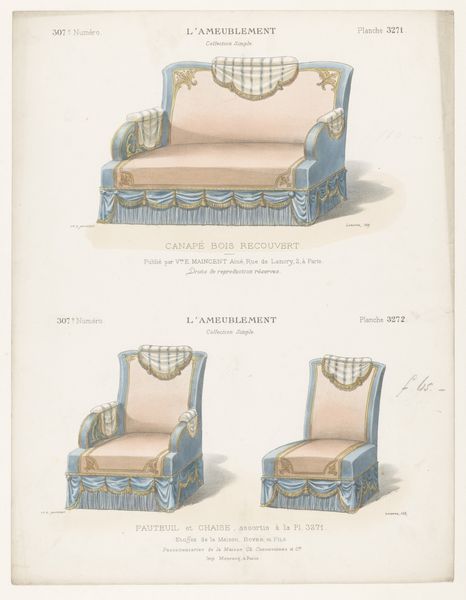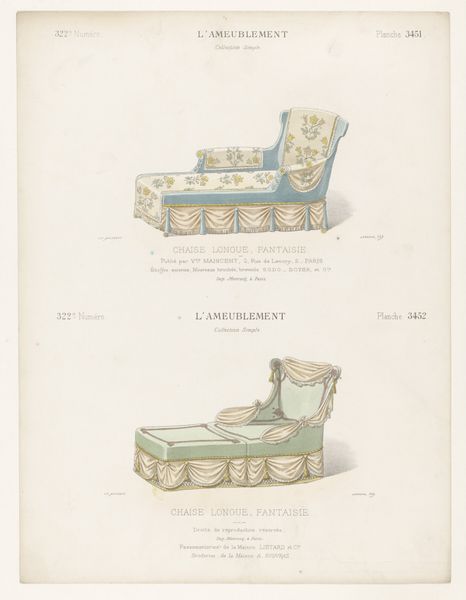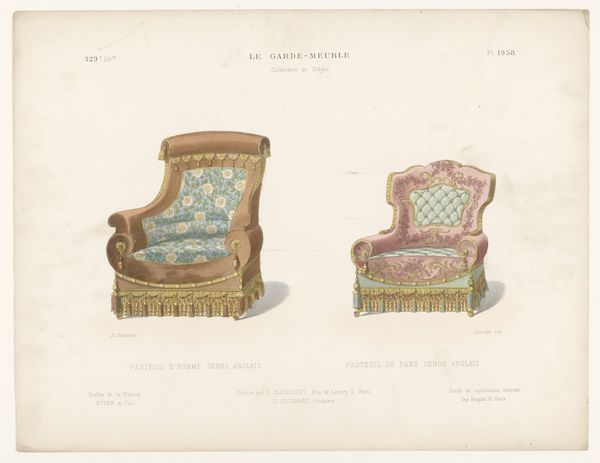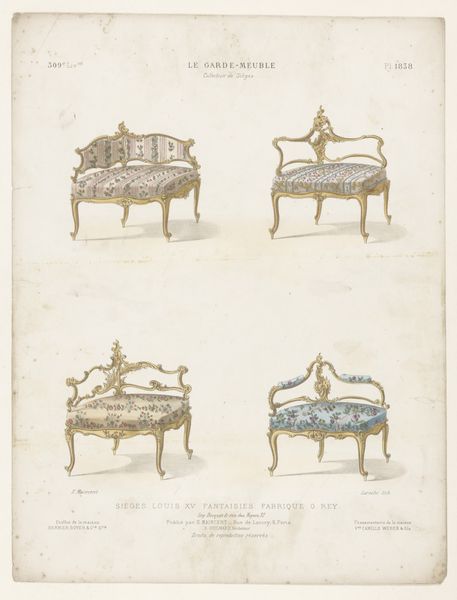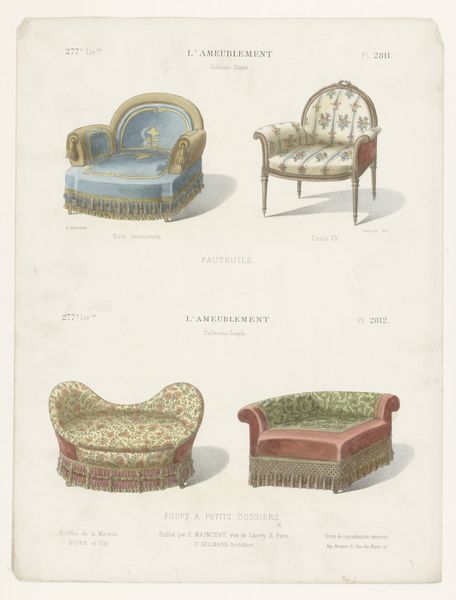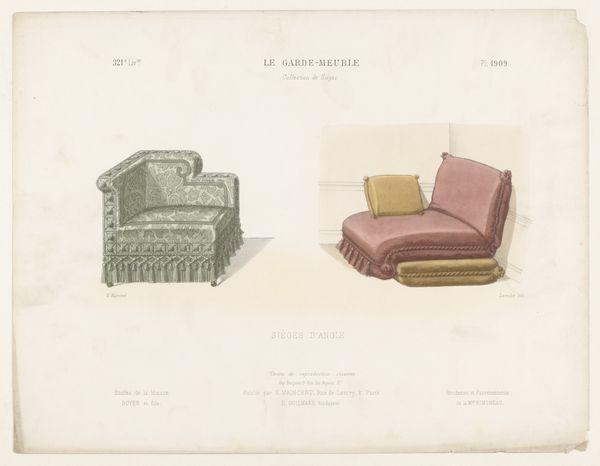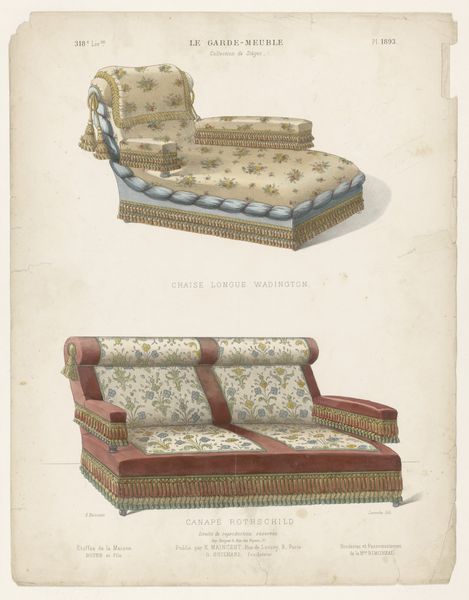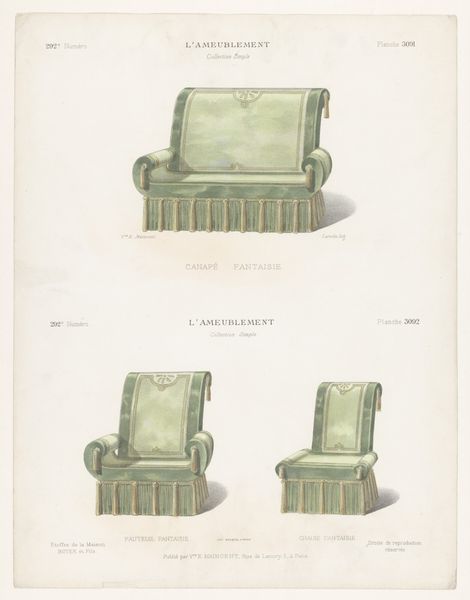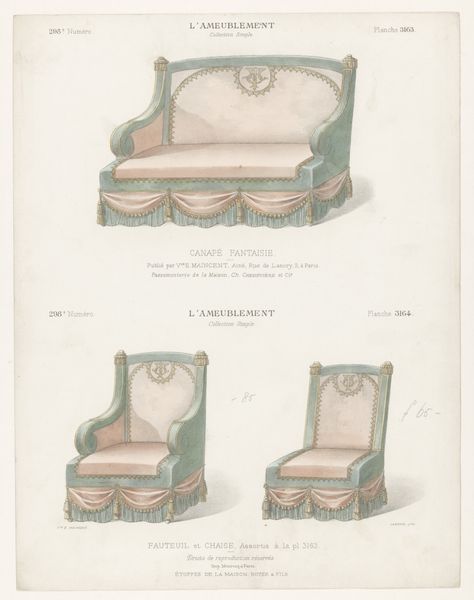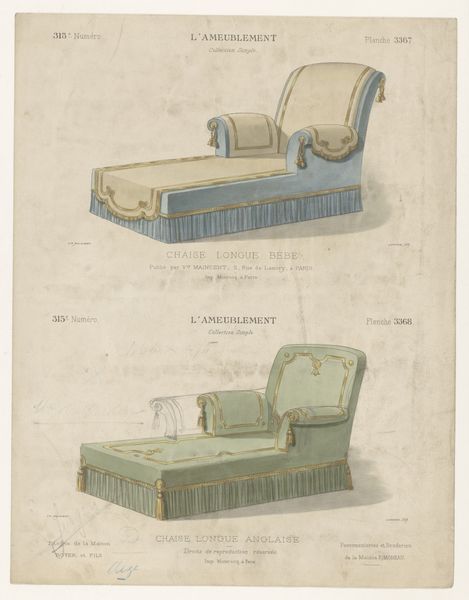
drawing, paper, ink
#
drawing
#
art-nouveau
#
paper
#
ink
#
decorative-art
Dimensions: height 358 mm, width 274 mm
Copyright: Rijks Museum: Open Domain
Curator: What a striking page of furniture studies! This drawing, titled "Canapé, fauteuil en stoel," was created between 1885 and 1895 by Léon Laroche. The medium is ink on paper, showcasing Art Nouveau and decorative art elements. Editor: I’m immediately struck by the sense of idealized domesticity here. The restrained palette, those dainty tassels... it feels almost suffocatingly proper. Curator: Interesting you say that. Let's delve a bit deeper. Given the late 19th-century context, particularly during the height of the Belle Époque, these furnishings speak to a rising bourgeois class consolidating wealth and attempting to perform status. The "petit russien" style advertised here is not simply about aesthetics; it's about aspirational identity and geopolitical posturing, where appropriating exotic or "foreign" design elements becomes a signifier of cultural capital. Editor: Yes, and notice the specific repetition of motifs: a singular flower shape appears both in the seat-back tapestry and, reduced and simplified, within the border design. The flower, of course, historically laden with connotations of femininity and luxury, serves to further underscore ideals about feminine containment in the domestic sphere. Curator: Precisely. Moreover, this imagery serves as a cultural marker of power dynamics at play, especially relating to gender roles within emerging capitalist structures during this period. Laroche is not simply rendering furniture. He's tacitly reflecting, and potentially reinforcing, systems of hierarchy operating in French society through domestic accoutrements. Editor: Indeed. We also can consider the effect of such mass-produced drawings intended for prospective customers. To select particular symbolic features—here the green velvet, the repeated blossom shape, the gentle gold of the tassel edging—is not a random action but a declaration of alignment to cultural narratives. To display or inhabit these carefully crafted arrangements performs identity and social position for its inhabitants. Curator: What's compelling is observing the through line linking aesthetics, symbolism, social power, and marketing. We can start understanding furniture's roles within identity-making practices of the 19th century onward, allowing people to create identity using objects that embody status and aspiration. Editor: These drawings remind me to be aware that the apparently "simple" task of choosing a seat in one's own home in fact bears complex connections with a host of political and personal reverberations that continue today.
Comments
No comments
Be the first to comment and join the conversation on the ultimate creative platform.
